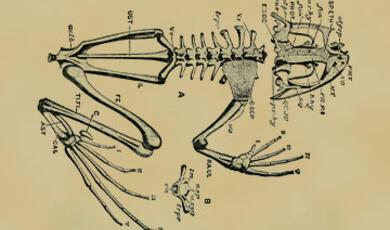5 November 2013
Having a Laugh?
Comedy and Comedians
Professor Glenn D Wilson
“Analysing a joke is like dissecting a frog – no one laughs and the frog dies.” (Richard Herring).
The earliest recorded joke is a riddle found in the tomb of Pharaoh Snefru (2613-2589 BC). It is attributed to a disgruntled architect who may have risked execution for his impertinence. How do you entertain a bored pharaoh? – You sail a boatload of young women down the Nile, dressed only in fishing nets, and invite him to go and catch a fish. Apparently little has changed in 4500 years (Lowis, 2013).
In his classic work Jokes and their Relation to the Unconscious (1905) Freud argued that humour can be split into two components, the libidinous material (e.g., sex, aggression, fear of death) and the formal structure, or joke technique, that provides the social excuse for airing taboo instincts. Freud saw humour as a safety valve for the expression of repressed sex, fear and hostility.
This is now called tension-relief theory. Humour combines emotional arousal with signals of safety, the recognition that the threat is not real – that it is all “just in fun (Wilson, 2002). As with a “white-knuckle ride” at the fairground, in which fear is aroused prior to a safe landing, humour jacks up tension by raising anxieties, then defuses them by trivialisation, triumph or humanisation. The two components may occur simultaneously or in quick succession.
Did you hear about the honeymoon couple who couldn’t tell the difference between Vaseline and putty?” - All their windows fell out.
All kinds of ghastly scenarios are envisaged before tension is suddenly dispelled by the punch line. The more tension that is aroused the funnier the joke. Laboratory studies show that if an audience is sexually aroused, e.g., by showing erotic movies or (for a male audience) having the experiment run by an attractive, flirtatious young woman, then the enjoyment of nearly all types of humour is increased (Levine, 1969).
Hostility often takes the form of disparagement or the assertion of superiority over others, e.g., ethnic and sexist jokes (Ferguson & Ford, 2008). Derogatory jokes are favoured by stand-up comedians, who may encounter trouble if their targets are present in the audience. Such jokes are, naturally, better appreciated by the in-group (those who share the stereotype) than those identifying with the victims (who are likely to find them unfunny or offensive). We are inclined to enjoy and smile at the misfortune of others (schadenfreude), especially when they are disliked, high-status or envied, e.g. bankers (Cikara & Fiske, 2013).
Not all humour depends on anti-social content. Some jokes feature intellectual titillation (nonsense, word-play, incongruity, bizarre juxtaposition, etc). Hurley et al (2011) reckon that these puzzle-solving aspects are central to humour because it derives from our evolutionary need to anticipate what will happen next and to make corrections when expectations are not fulfilled. Mirth is the pleasure that comes from the debunking of presumptions and sudden restructuring of perception (a reward for exercising a survival skill).
How do you stop an elephant charging? Take away its credit card.
Tension-relief and incongruity can be combined through the concept of benign violations. The violations can be either intellectual (e.g., absurdities and non-sequiturs) or they can refer to immoral and embarrassing behaviour. Like play-fighting, humour is good fun so long as it is simultaneously “threatening” and harmless. It occupies the overlap of what is a violation and what is benign (McGraw & Warren, 2010).
In terms of emotional expression, humour lies within the intersect of laughter and smiling, which have different evolutionary origins. The body language of laughter, with its percussive sound, may derive from the open-mouthed threat to bite. Although playful, it includes elements of triumph and aggression. Smiling signals pleasure, but has overtones of appeasement and submission. The teeth are closed, hence harmless, and bared like a chattering (fearful) monkey. Women smile more than men and a boxer who smiles at his opponent at the prefight weigh-in is more likely to lose (Klaus and Chen, 2013).
Some things are funny because they highlight a familiar but often unspoken truth (Lynch, 2010). The standard material for stand-up comedians like Jo Brand or Michael McIntyre includes derogatory stereotypes but also harmless observations pertaining to the little hassles of everyday life. If silly situations are familiar (e.g., problems with shopping trolleys, public transport, or dating mishaps) we laugh in recognition, and enjoy the reassurance that others encounter similar frustrations. We are all, as it were, “in the same boat”.
A recent form of observational comedy focuses on social awkwardness. Ricky Gervais (UK), Larry David (US) and Chris Lilley (Australia) are among the great exponents. It may take the form of a mockumentary, in which characters are unaware how excruciating they are (e.g., David Brent, the egotistical manager in The Office). Or, the characters may share in the embarrassment they generate (Extras, Curb Your Enthusiasm). A fear of social exclusion (stigma) is one of our greatest phobias; hence stage fright and speech anxiety. This fear of alienation is probably the motivational basis of cringe comedy (Clegg, 2012).
Satire is a slightly subversive form of humour which pokes fun at stupidity and hypocrisy, perhaps with an agenda of prompting social change. Moliere’s Tartuffe is a study of a “pious” holy man who infiltrates a man’s household, exploits his hospitality and tried to seduce his wife. It lasted one night in 1667 before being banned by Church authorities and as recently as 1967 Catholics in Los Angeles were forbidden to see it. Monty Python’s Life of Brian was also seen as a threat by some Christians and banned in many parts of the world, even though the target of the satire was not Jesus but blind faith and the need to follow gurus.
Gilbert and Sullivan’s characters include a senile judge, a First Lord of the Admiralty who had never been to sea (W.H.Smith), a Queen with “the hots” for a fireman (Victoria’s Gillie) and a man who is “half a fairy “ on a mission to make the House of Lords to sit “through the grouse and salmon season” and open the peerage to competitive examination. (Nick Clegg was not around in 1882.) Comedians are like modern court jesters; they represent our desire to be eccentric and rebellious and to knock down “sacred cows”.
Darwin described humour as mental tickling. Tickling may indeed be prototypic of humour (Provine, 2004). It evokes laughter-like noises in many non-human species (e.g., orang-utans). It involves the teasing stimulation of intimate and vulnerable parts of the body (e.g., tummy or underarms) hence requiring trust. Usually it is pleasurable, though it can be aversive if perceived as unavoidable. It is social in that it can only be done by someone else; you cannot effectively tickle yourself.
Laughter is observed in many animals from rodents to primates. It occurs mostly in face-to-face interactions between friends. According to Scott (2013) we are 30x more likely to laugh in the company of others than when alone. While joyful laughter is contagious and socially bonding, laughter can also be cruel when used to exclude an individual from the group (taunting laughter).
Children generate humour from a very early age (Hoicka & Akhtar, 2012). In the first year it is mainly peekaboo, chasing, and funny body movements (e.g., falling backwards and putting feet in the air). By ages 2/3 toddlers are producing several other types of humour. They use objects in unconventional ways (e.g., underpants on head) and miscategorise things (e.g., pig says “moo”). Early jokes tend to copy the parents but they are increasingly original, while remaining social (with smiling, laughing, and looking to the parents for a reaction).
Neurological studies reveal a distinction between the emotional and cognitive aspects of humour. Moran et al (2004) showed full-length episodes of Seinfeld and The Simpsons to subjects while monitoring event-related fMRI activity. Detecting jokes was associated with activity in the frontal and temporal cortices, while the emotional reaction to them which followed a little later (appreciation) was located in the insular cortex and amygdala. Clearly, different parts of the brain are involved in the humour response. Some (mostly cortical/verbal) connect with “getting” a joke and others (emotional/pleasure centres) go with enjoying it (Bartolo et al, 2006).
Brain damage impacts humour response in various ways. Children with focal epilepsy tend to find jokes less funny than controls (Suits et al, 2012). Those with damage to the corpus callosum (the tract linking the brain hemispheres) have difficulty with narrative jokes but still appreciate cartoons (Brown et al, 2005). Other studies have shown that damage to the right hemisphere is more detrimental to humour than left damage (Stammi & Stuss, 1999). Autistic individuals and schizophrenics are less responsive to cartoons that require inference of mental states in others for their understanding (Samson & Hegenloh, 2010; Marjoram et al, 2005).
Humour can be a flirtatious, mating signal. For men particularly, it is a way of showing off intelligence and creativity (good genes). At the same time it conveys sexual interest to a person we find attractive. Attractive people are judged funnier, and vice versa – funniness enhances attractiveness (Cowan & Little (2013), especially when the joker is male and short-term flings are concerned.
A French field study (Gueguen, 2010) found that women were three times more likely to give their phone number to a man they had just heard tell a joke to friends. A survey of partner preferences at Westfield State College in the US revealed that women want a man who is both receptive to humour and funny; men don’t care too much whether a woman is funny provided she laughs at his jokes (Bressler et al, 2006). The production of humour is thus more male (hence the preponderance of male stand-ups?) whereas receptiveness to jokes is equally male and female.
Although men and women find the world equally funny (Azim et al, 2005) they differ in what they find funny. Men particularly enjoy sexual and competitive themes while women favour nonsense jokes and clever word-play. Although advertisements which depict men as incompetent are common, sexist jokes with a female victim are often rated as funnier by women as well as men. This may be changing however; people with less traditional views of gender roles (both men and women) show a reduced liking for sexist humour (Moore et al, 1987).
Wilson & Brazendale (1973) studied a group of 97 female student teachers, measuring their social attitudes and preferences among a set of risqué seaside postcards (highly “sexist” by today’s standards). Women rated as less attractive by external judges were relatively religious and anti-hedonistic in attitudes but their cartoon preferences revealed a liking for those which depicted shapely women as the focus of lecherous male attention. This was interpreted as vicarious gratification though fantasy. Deprived of male attention in real life, these women seemed to gain pleasure in identifying with the women being lusted after in the cartoon. More attractive women expressed a preference for more sexually assertive, explicit and anatomical cartoons (e.g., those referring to erections, or the size of a man’s testicles). This could reflect greater confidence and experience among the attractive women.
Humour styles predict relationship stability. Saraglou et al (2010) investigated the use of humour in married and divorced couples. Constructive, self-enhancing and affiliative humour went with relationship satisfaction and a lower likelihood of divorce. Anti-social, vulgar and sarcastic humour (especially by men) went with poor relationships and divorce. Self-depreciating, insecure humour (especially in women) went with husband’s satisfaction but also a high likelihood of divorce. This finding shows that marital satisfaction is not necessarily bilateral.
Humour is widely used in advertising to increase attention and to promote warm, playful associations with the product. It can be effective, especially if the ad is likeable. If irritating, it can be memorable but counterproductive. Humour seems combat people’s natural resistance against aggressive marketing through a process of distraction (Strick et al, 2013). We don’t always remember the name of the brand after viewing an advertisement yet usually make a positive association with the right brand once in the store.
A major function of comedy is to help us cope with unpleasant and unavoidable circumstances such as disability, illness and mortality, thus promoting a more cheerful view of life (Moran, 2003). Recurrent themes in the comedy of Woody Allen are encapsulated in the title of his film Love and Death. Allen seems to have a particular anxiety concerning his attractiveness to women, which is played out therapeutically in many of his films as “the geek that gets the girl” through his wit. Not only does it work in his films but he frequently managed to achieve the same in real life.
The coping function of humour is well illustrated by sick jokes, of the kind that rapidly appear in the wake of major disasters like 9/11, and gallows humour, in which people make brave witticisms in the face of impending doom. Always Look on the Bright Side is currently one of the most popular funeral songs in the UK. This sort of humour is widely used for catharsis, for distancing oneself from intolerable situations, and for social cohesion among groups such as undertakers, surgeons and emergency workers but there is a danger that it could foster disrespectful attitudes toward clients (Sullivan, 2013).
A variety of health benefits have been claimed for humour and laughter. These include improved mood and quality of life, stress reduction, lowered blood pressure, and strengthening of the heart. Most are intuitively plausible, and research results mostly positive, though often failing to meet scientific criteria (Martin, 2002; Mora-Ripoll, 2010). Laughter increases the secretion of endorphins, hence reducing pain and promoting social bonds (Dunbar et al, 2012). When comedy is watched alone, the pain control effect is diminished.
Humour and laughter are widely said to bolster immune responsiveness but evidence for this is thin (Bennett & Lengacher, 2009). There are several different measures of immune function and results, while usually positive, are mixed and inconclusive. No unpleasant side-effects are reported with medical applications of humour and laughter but they should not be used in place of chemotherapy or other treatments with more obvious benefits.
If humour is generally good for health, we might expect it to increase life expectation. Indeed it may do so. Svebak et al (2010) found that sense of humour not only correlated with general health in Norwegian adults, but it independently predicted survival at least up until the age of 65 (after which the correlation seemed to disappear). On the other hand, professional comedians do not seem to live longer. A few (like Bob Hope and George Burns) live beyond 100, but they are exceptions. Comedians (along with other performers) actually die slightly younger than those in comparable professions (Friedman, 2013).
The image of the sad clown is well ingrained. It is widely believed that comedians are particularly prone to depression and suicide and there have been many famous instances from Tony Hancock to David Walliams (2012). There is a famous story about a man in Hamburg who, in 1950, went to the doctor complaining that life was getting him down. “You should go and see Grock (the famous clown)”, said the doctor. “He’ll make you laugh and you’ll feel a lot better”. “I am Grock” said the man disconsolately.
According to Force (2011) comedians often suffer child abuse and neglect, which they turn to creative purpose. The idea is that they set out to create a happier world than the one they grew up in order to help themselves and their audience. If so, they must be successful in their aim, because there is little evidence that they are depressed and miserable as a goup. Professional stand-up comedians are no more neurotic than comparison groups (Greengross & Miller, 2009) and their parents were not lacking in care and protectiveness (Greengross et al, 2012).
Similarly, there is no evidence that comedians have exceptionally high rates of suicide (Fisher and Fisher, 1981). There is a higher suicide rate among people suffering bipolar disorder (which includes several famous comedians like Spike Milligan, Paul Merton, Stephen Fry and Ruby Wax). However, these high profile cases may have led us to overestimate psychopathology in humourists.
This is not to deny that comedy often sets out to help us cope with life’s travails just that it seems to be successful in doing so. If comedians suffer more problems than the rest of us, then their comedy seems to be effective in getting them through as well as the rest of us.
Whether the scientific study of humour has much to offer comedians in honing their skills and generating funny material is much less certain. Comedians probably make better psychologists than psychologists make comedians.
According to Ken Dodd, The trouble with Freud is that he never played second house at the Glasgow Empire on a wet Tuesday.
References
Azim, E. et al (2005) Sex differences in brain activation elicited by humour. PNAS, 102, 16496-16501.
Bartolo, A. et al (2006) Humour comprehension and appreciation: An fMRI study. Journal of Cognitive Neuroscience, 18, 1789-1798.
Bennett, M.P. & Lengacher, C. (2009) Humour and laughter may influence health IV: Humour and immune function. Evidence-Based Complementary and Alternative Medicine, 6, 159-164.
Bressler, E.R. et al (2006) Production and appreciation of humour as sexually selected traits. Evolution and Human Behaviour, 27, 121-130.
Brown, W.S. et al (2005) Comprehension in primary agenesis of the corpus callosum. Neuropsychologia, 43, 906-916.
Cikara, M. & Fiske, S.T. (2013) Their pain, our pleasure: Stereotype content and schadenfreude. Annals of NY Academy of Sciences, 1299, 52-59.
Clegg, J. (2012) Stranger situations: A self-regulatory model of socially awkward encounters. Group Processes and Intergroup relations, 15, 693-712.
Cowan, M.L. & Little, A.C. (2013) The effects of relationship context and modality on ratings of funniness. Personality and Individual Differences.54, 496-500.
Dunbar, R.I. et al (2012) Social laughter is correlated with an elevated pain threshold. Proceedings of the Royal Society, B, 279, 1161-1167.
Ferguson, M.A. & Ford, T.E. (2008) Disparagement humour: A theoretical and empirical review of psychoanalytic, superiority and social identity theories. International Journal of Humour Research, 21, 283-312.
Fisher, S. & Fisher, R.L. (1981) Pretend the World is Funny and Forever. Hillsdale: Erlbaum.
Force, N. (2011) Humour’s Hidden Power: Weapon, Shield and Psychological Salve. (Braedon Press, CA).
Freud, S. Jokes and their Relation to the Unconscious. London: Routledge and Kegan Paul (reprinted 1960).
Friedman, H.S. (2013) Why don’t comedians live longer? Psychology Today (online).
Greengross, G. & Miller, G.F (2009) The Big Five personality traits of professional comedians as compared with amateur comedians, comedy writers and college students. Personality and Individual Differences, 47, 79-83.
Greengross, G. et al (2012) Childhood experiences of professional comedians: Peer and parent relationships and humour use. Humour, 35, 491-505).
Gueguen, N. (2010) Men’s sense of humour and women’s responses to courtship solicitations: An experimental field study. Psychological Reports, 107, 145-156.
Hoicka, E. & Akhtar, N. (2012) Early humour production. British Journal of Developmental Psychology (online).
Hurley, M. et al (2011) Inside Jokes: Using Humour to Reverse Engineer the Mind (MIT press, Mass.)
Klaus, M.W. & Chen, T.W. (2013) A winning smile? Smile intensity, physical dominance and fighter performance. Emotion, 13, 270-279.
Levine, J. (1969) Motivation in Humour. New York: Atherton.
Lowis, M (2013) Letter in The Psychologist, 26, 384.
Lynch, R. (2010) It’s funny because we think it’s true. Laughter is augmented by implicit preferences. Evolution and Human Behaviour, 31, 141-148.
McGraw & Warren (2010) Benign violations: Making immoral behaviour funny. Psychological Science, 21, 1141-1149.
Marjoram, D. et al (2005) A theory of mind investigation into the appreciation of visual jokes in schizophrenia. BMC Psychiatry, 5 (online).
Martin, R.A. (2002) Is laughter the best medicine? Humour, laughter and physical health. Current Directions in Psychological Science, 11, 216-220.
Moore, T.E. et al (1987) Gender, attitudes towards women, and the appreciation of sexist humour. Sex Roles. 16, 521-526.
Mora-Ripoll, R. (2010) The therapeutic value of laughter in medicine. Alternative Therapies in Health and Medicine, 16, 56-64.
Moran, C.C. (2003) Beyond content: Does using humour help coping. Disability Studies Quarterly, 23, (online).
Moran, J.M. (2004) Neural correlates of humour detection and appreciation. NeuroImage, (online).
Provine, R.R. (2004) Laughing, tickling and the evolution of speech and self. Current Directions in Psychological Science, 13, 215-218.
Sampson, A.C. & Hegenloh, M (2010) Stimulus characteristics affect humour processing in individuals with Asperger syndrome. Journal of Autism and Developmental Disorders, 40, 438-447.
Saraglou, V. et al (2010) Bad humour, bad marriage: Humour styles in divorced and married couples. Europe’s Journal of Psychology, 6, 94-121.
Scott, S. (2013) Laughter – the ordinary and the extraordinary. The Psychologist, 26, 264-268.
Shammi, P. & Stuss, D.T. (1999) Humour appreciation: A role of the right frontal lobe. Brain, 122, 657-666.
Strick, M. et al (2013) Humour in advertising: An associative processing model. European Review of Social Psychology, 24 (online).
Suits, K. et al (2012) Differences between humour comprehension in healthy children and children with epilepsy. Journal of Child Neurology, 27, 310-318.
Sullivan, E. (2013) Is work a laughing matter? The Psychologist, 26, 294-295.
Svebak, S. et al (2010) A 7-year prospective study of sense and humour and mortality in an adult county population. The International Journal of Psychiatry in Medicine, 40, 125-146.
Walliams, D. Camp David. London: Michael Joseph.
Wilson, G.D. (2002) Psychology for Performing Artists. London: Whurr/Wiley.
Wilson, G.D. & Brazendale, A.H. (1973) Sexual attractiveness, social attitudes and response to risqué humour. European Journal of Psychology, 3, 95-96.
© Professor Glenn D Wilson 2013


 Login
Login







